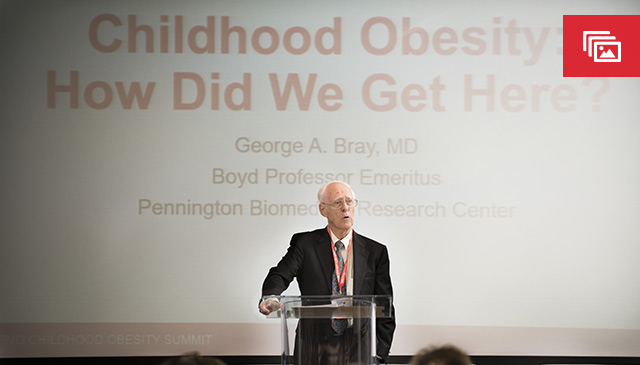
The nation’s top medical experts, hospital executives, pediatricians and community health leaders recently convened at Texas Children’s Hospital for U.S. News & World Report’s “Combatting Childhood Obesity” summit, addressing one of the nation’s most critical health issues.
Visiting guests were welcomed by Texas Children’s Physician-in Chief Dr. Mark Kline, who also spoke about the challenges posed by childhood obesity.
“For some time, clinicians have struggled with how to deal with obesity in a holistic and comprehensive manner,” he said. “We hope the work done here will facilitate healthy discussion and help shine light on how best to confront this ever-growing problem.”
The summit was held as part of a two-year commitment by U.S. News to put a spotlight on the nation’s most urgent public health priorities. Obesity has steadily risen as one of the gravest issues in health care: One in five children in the United States is now affected, and nearly one-third are overweight. The estimated annual cost of health care spending directly related to obesity is $149 billion. The purpose of the summit – sponsored by Texas Children’s Hospital – was to raise awareness around childhood obesity and to bring experts together to discuss ways to potentially solve the problem.
Meeting the challenge at Texas Children’s
That Texas Children’s hosted and sponsored a conference around the issue of pediatric obesity is fitting. Currently, around 22,000 children 18 years old or younger who are seen at Texas Children’s are obese, and 8,000 are 5 years old or younger. Obesity is one of the biggest drivers of preventable chronic diseases and in childhood can lead to high blood pressure and cholesterol, increased risk of type 2 diabetes, asthma and sleep apnea, and joint problems, not to mention psychological ramifications such as anxiety and depression.
To directly address the problem of obesity in our patients, as well as some of the underlying causes, such as poverty and food insecurity, Texas Children’s included a system-wide body mass index (BMI) goal as part of our Fiscal Year 2019 care quality objectives. The target was to record BMI for 85 percent of the patient population, ages 2 to 19. In addition to recording BMI, a target was set to refer or implement counseling and/or education for more than 40 percent of patients with BMI greater than the 85th percentile.
“Obesity drives significant health outcomes in our patients, so it was extremely important for us to include this in our FY19 quality goals,” said Dr. Heidi Schwarzwald, chief medical officer of Pediatrics for Texas Children’s Health Plan. “By collaborating across the system, and using the electronic medical record, we can provide children and their families with supportive resources and guidance to combat childhood obesity.”
So far this year, Texas Children’s is exceeding those goals. Through March 2019, we’d recorded BMI for more than 87 percent of our patients, and more than 73 percent of those with BMI in the 85th percentile or higher have been referred to or received the resources they need to combat obesity.
Stay tuned for further updates on Texas Children’s obesity goals and other FY19 organizational goals.










